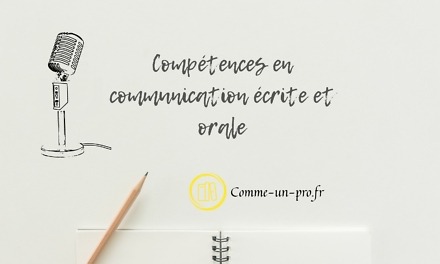Whether it is to negotiate the financing of training for your project or to present your ideas only, it is important to master the art of convincing, especially if this talent is not innate for you. Here are our tips that you can apply in all situations.
To be able to please others
In both personal and professional life, it is important to have long-term goals. Along the way, you will have to make sacrifices, sometimes useful to be able to keep with you the key players in your professional development. Doing this will allow you to get closer to your colleagues while gaining their affection.
Farm without being authoritarian
No matter how important you are to your ideas, keep your position and avoid frontal attacks so that your interlocutor (s) do not become permanently attached to your ideas. The trick is to keep a neutral tone throughout your presentation and give your audience time to assimilate or apprehend your arguments. If these are sufficiently relevant, your audience will recognize it.
Affirm your opinion
On the other hand, present your project or your ideas in the form of a question is equivalent to asking for confirmation from your listeners. So avoid falling into this error. If you're worried that your ideas might seem a little superficial, don't show it. Ban "I think" or "it is possible" from your vocabulary, make sure your words reflect your total confidence in your arguments.
Know your audience
To better prepare your speeches, find out beforehand about the type of audience you will be addressing. Know their personalities, their values, their habits, their needs and others. You will know what tone to adopt during a meeting or interview and your pitch will certainly be more precise. Your message will be much more likely to be accepted.
Choose quality illustrations
In addition, the arguments and ideas that you will advance will be anchored in the minds much more easily if they are supported by illustrations that will testify the relevance. Prepare them in video, photo and graph format, this will bring weight to your comments. Your audience will be able to have a clearer vision of your concepts, ideas, recommendations or findings.
A positive body language and mastered
Don't forget to match your words with your actions to make your presentation captivating and emphasize the dedication you have for your project or your ideas. For example, tilting your head towards your audience is a mark of interest in feedback from audience members. On the other hand, crossing your arms shows that you are closed to external remarks.
Smile to convince
We keep saying it again and again, smile, because the smile is contagious. It is a natural and unconscious behavior of the human being that arouses the appreciation of your interlocutor. He will then return it to you naturally. So think of smiling, your ideas will make more followers than with a burial head.
Accept constructive criticism
Remember that any project may have a flaw, none of which is supposed to be perfect. However, allowing your audience to point it out or correct it shows your interest in defending theirs. By reformulating the messages in another way, you confirm your understanding of their requests and needs. This attitude will assure the public of your openness to new ideas and reassure people who might think you are trying to impose their personal ideas on them.
Show interest in others by asking questions
Why would your audience give you an interest if you, yourself, seem completely impervious to the ideas your confreres have presented before you? Give them all your attention during their presentations so that they in turn give you theirs as a reciprocal measure. To do this, ask them the relevant questions that will ensure your interest and mutual respect.
Call your contact by name
We also note that people called by their surnames feel considered. Indeed, we experience a certain pleasure when we are called by our name. So that the effect is permanent, so do not limit yourself to greetings, do the same during your discussions, regardless of the object. Thus, to address you directly to your interlocutor will allow you to increase your power of persuasion.
Introduce yourself to get closer to your interlocutor
Difficult, however, to accept the arguments of a stranger, let alone to trust him. The presentation breaks this barrier. Indeed, no matter the relevance of your ideas, the importance of the project that you lead, your interlocutor will always doubt your arguments as you remain a total unknown to him. Just showing what kind of person you are will lead to a consensus.
Convince for a cause that is believed
To be as convincing as possible, support the ideas and arguments or topics that interest you, without having to "pretend". Indeed, people convinced by the causes they support are naturally safer on their own. Thus, it will be easy for you to convince your audience if you, yourself, believe in your ideas, arguments or projects.
Allow your audience to slowly assimilate their ideas
The art of convincing also depends on your patience with your interlocutor or your audience for understanding your concepts. Do not continue on the same path if at first sight your presentation and arguments seem unproductive. Indeed, insisting on your audience can produce the opposite effect of your goal. To prevent the other person from closing, give yourself some time to modify or improve them.
Also, to convince his interlocutor, it must be known to better adapt his speech. Improving your emotional quotient will certainly enable you to cope with the different interventions of your audience. Exercise regularly in this direction, you will certainly achieve much more results.



